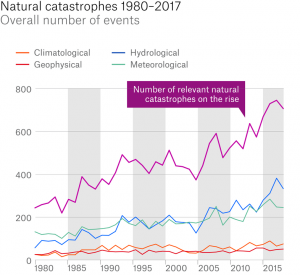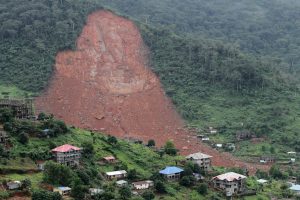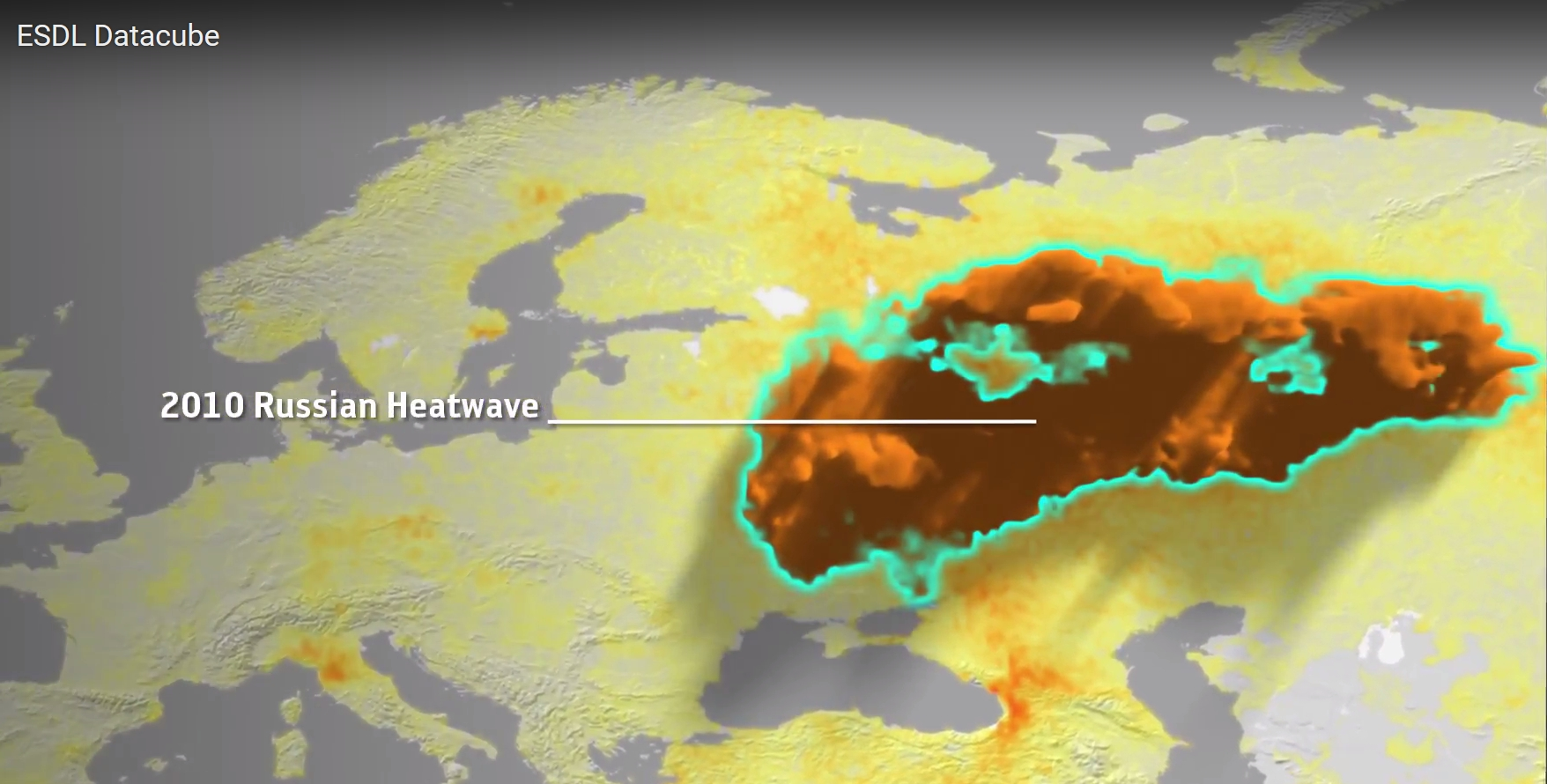Motivation

|
|

Source: Munich Re NatCatService
|
|

The Global Risks Landscape 2018 |
|
KAN Objectives
- To provide an open platform for scientific communities from across science disciplines and engineering working on extreme events, disaster risk reduction and governance under the umbrella of Future Earth, IRDR and WCRP programs, to exchange information, knowledge and data, and to co-define a collective scientific focus beyond any single partner.
- To engage with societal actors from local/national/international legislation, administration, business sector, practitioners, civil society and UN frameworks to co-design research agendas and co-create new knowledge for effectively reducing disaster risks through partnerships and joint outputs.
- To stimulate groundbreaking and solution-oriented scientific research and synthesis with major impact on the development of effective strategies for transitioning development from a risk accumulation to a risk reduction process.
- To address systemic, complex and cascading risks by synthesis of various scientific approaches and products, in addition to small-scale frequent disasters and large-scale geophysical and climate extremes, also in order to contribute to the Sustainable Development Goals.
For more details please have a look at our Risk KAN vision document version 1.0 (November 2017)
Key questions (examples)
- Which impacts are expected to be caused by extreme climate events including risks emerging from compound events and cascades of impacts and feedbacks across ecosystems, infrastructures and society?
- What are key obstacles towards societal resilience across different sectors and SDGs, while facing climate extremes? (Data?, Knowledge?, Perception?, Governance?, Compliance?)
- What local to global governance arrangements best support equitable and sustainable risk reduction?
Examples
Extreme events matter around the whole globe. Hazards related to environmental change include floods, drought, heatwaves, storms and others. Some of the hazards have devastating effects for local populations, others may even have larger-scale impacts via economic and cultural dependencies. The examples below give an overview and include events which have not been very prominent in the media, indicating a perception bias.
Precipitation extremes are leading worldwide to disastrous landslides and/or floods; cascading risks might be quite straight forward for some examples, but are less clear when societal mechanisms are involved
 |
| Hiroshima Prefecture August 2014 |
 |
| Freetown, Sierra Leone August 2017 |
 |
| Russian Heatwave 2010
Source: “Earth System Data Lab” http://earthsystemdatalab.net/ funded by the European Space Agency
|
The Russian heatwave is a clear example of risk cascades in both natural and societal system. The heatwave cost more then 10000 lives, but not only via direct heat effects but through causal chains, e.g. Heat –> Drought –> Fire –> Air pollution, further aggravated by insufficient public information. It also speculated that is had global economic and societal effects, e.g. for Arabic countries, via increasing wheat prices. On the other hand Northern forest seemed to have benefited from the heatwave (Flach et al., 2018). Earth Observation can help to diagnose and interpret constellations of multiple hazards.
KAN Aims
- To build a global partnership and network of scientific and practical excellence and expertise across disciplines and sectors to accelerate integration and synthesis for ground breaking and solution oriented research and synthesis for disaster risk reduction and for respective governance and decision making under global environmental and societal change
- To identify priorities and support complementarity of research on systemic risk, including the interaction of climate-change induced extreme events and other disasters
- To explore and enhance the role of science as an active participant in transformation to sustainability and resilience through systematic scientific synthesis and research, facilitation and convening roles among diverse science communities and in collaboration with societal actors (business, administration, policy, NGOs)
KAN Principles
- Solution-oriented, using existing and generating new knowledge and data to address tangible risk management challenges.
- Collaborative, including partnerships between scientific communities, people and ecosystems at risk, administrative, business and policy actors.
- Synthetic, moving toward synthesizing existing scientific knowledge across sectors, using common terminologies and categories for analysis.
- Open, for all data, analysis ideas and outcomes.
- Inclusive, respecting gender, career stage and geographical equity.
- Cutting-edge, innovative, developing tools and analysis based on excellent science and technology
For more details please have a look at our Risks KAN vision document version 1.0 (November 2017)
Risk KAN Partnership
Proposed Risk KAN structure
The Risk KAN is a joint initiative of Future Earth, IRDR and WCRP. It will bring together relevant components and activities of the sponsoring programmes and other partners relevant in the context of climate- and weather-related emergent risks and extreme events. Currently the Risk KAN is in its development phase. The interim stage was coordinated by an interim Development Team (iDT), a short-life body that planned, implemented and monitored the process to develop the full Development Team (DT) which started its activities in February 2019 .
Another core element of the Risk KAN will be working groups (WG). Working groups provide scope for DT members and other KAN members to undertake supporting and associated research, networking and other activity. Working Groups are currently established based on expression of interest by Risk KAN members.
|
|
Core tasks of the Development Team are (examples):
The aims of the working groups are:
|
